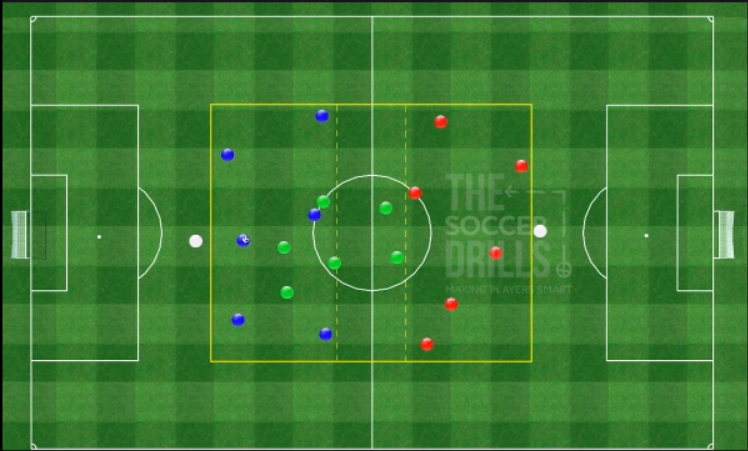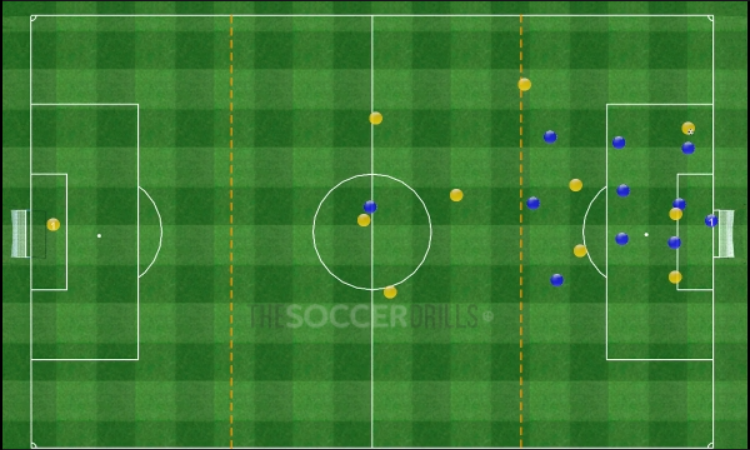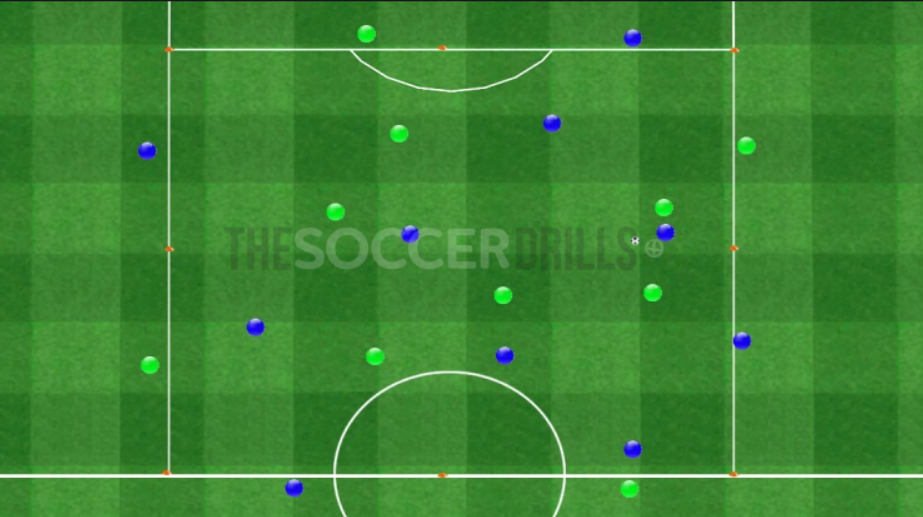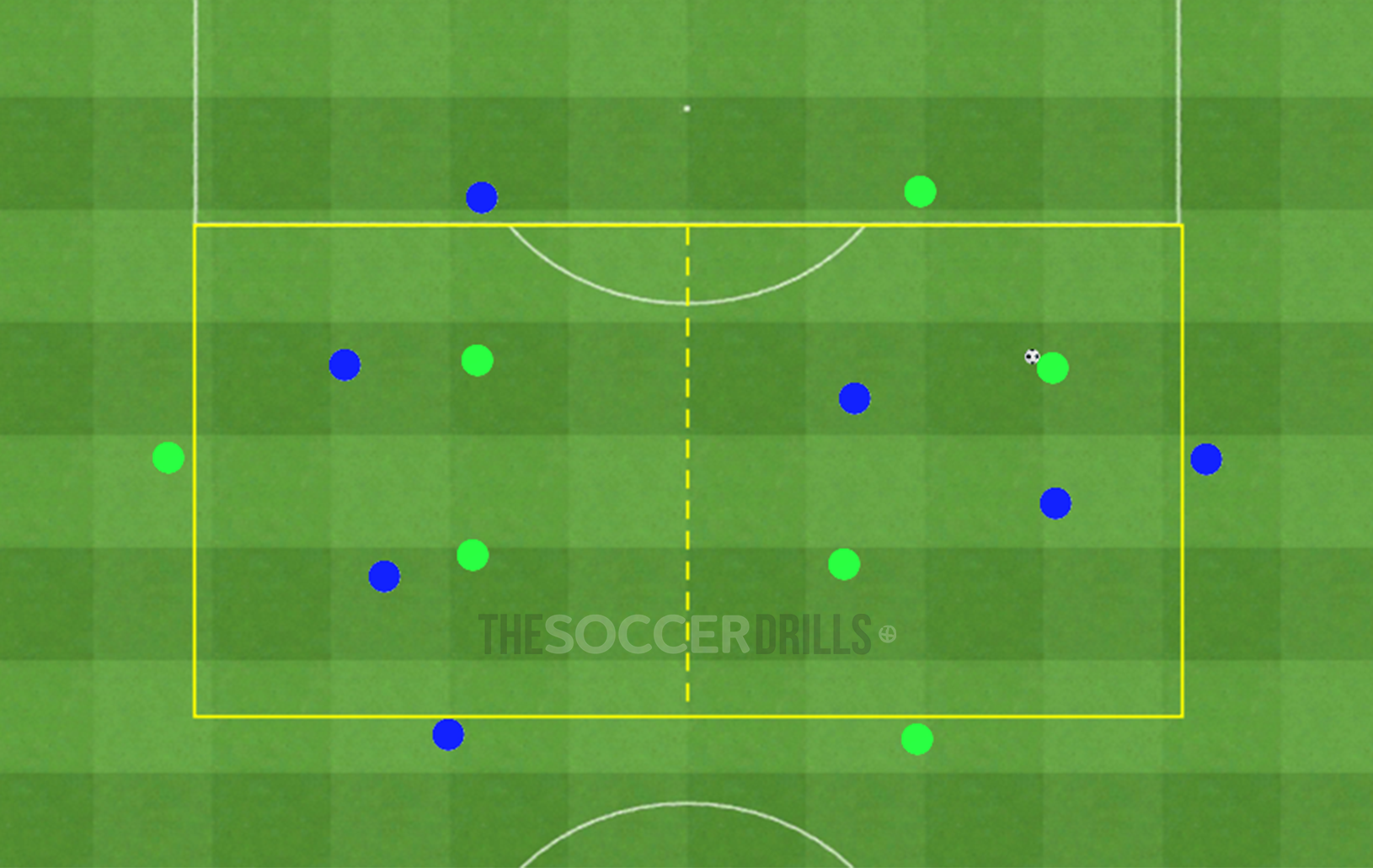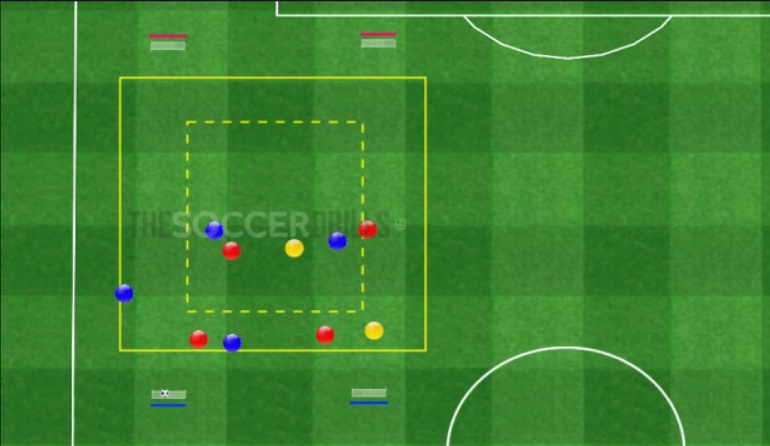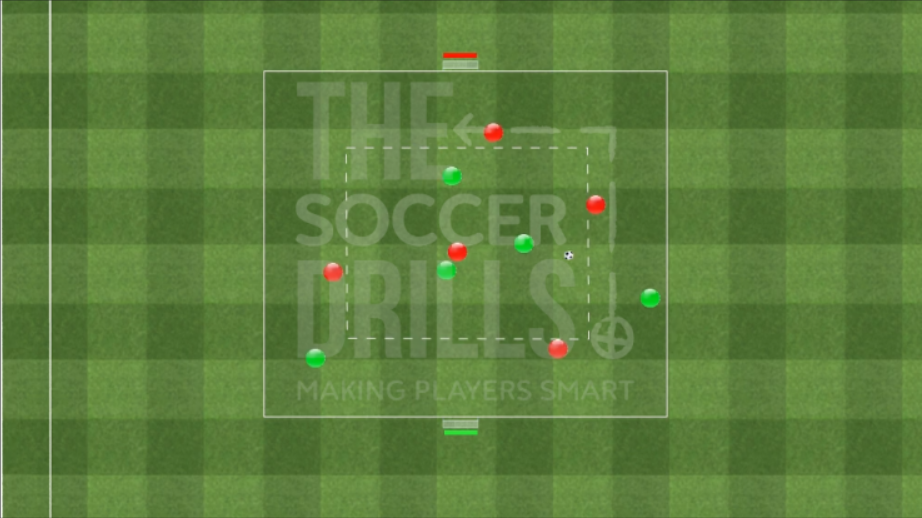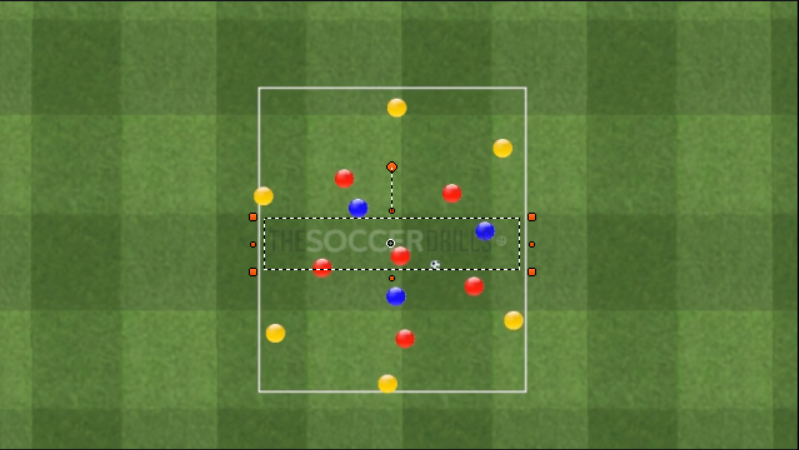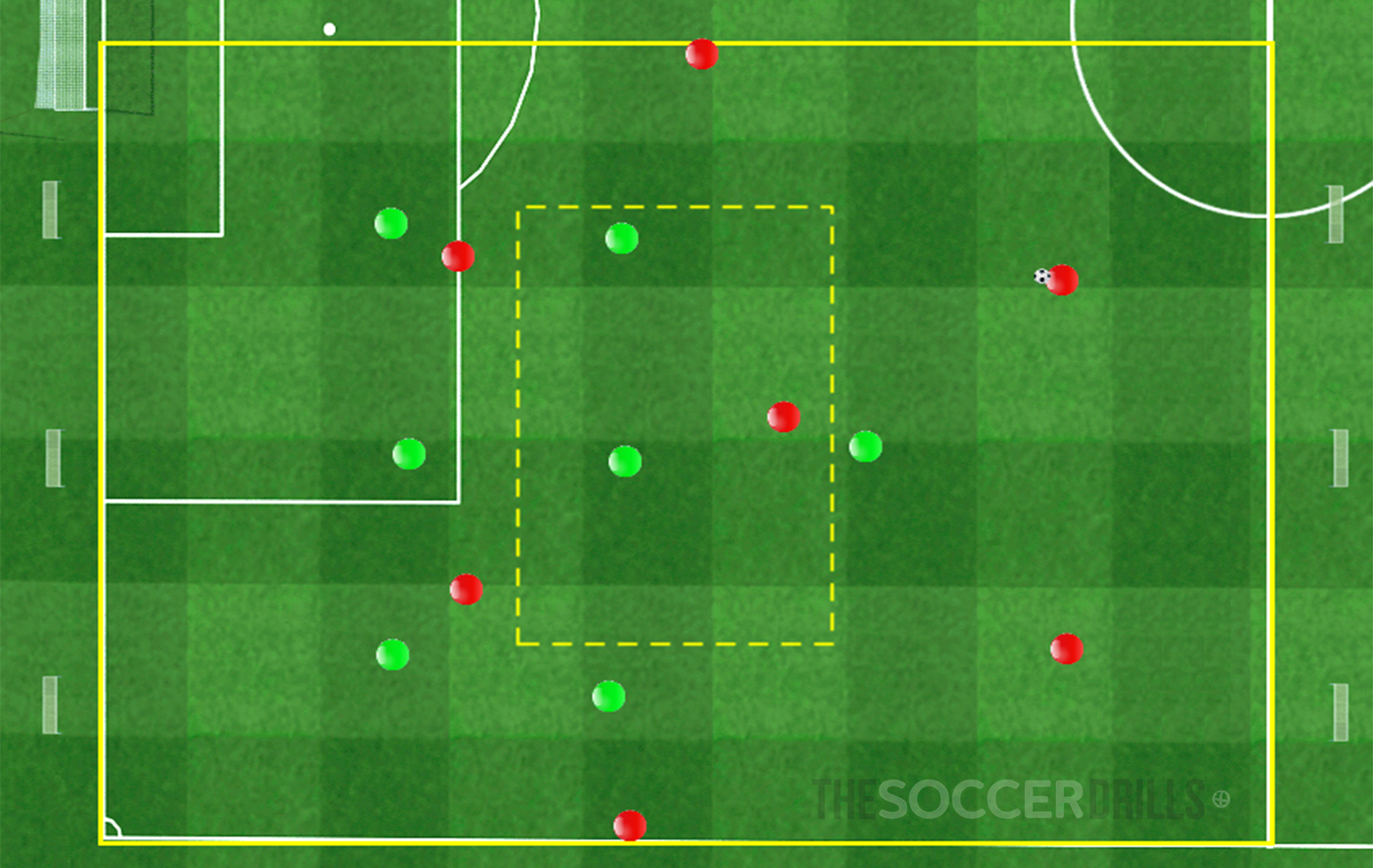Play pressed and switch zone
To include the goalkeepers in the building drills is key for them to then do it comfortably during the games. In the drill, we will start building the game to then advance in the game overcoming the opposition high press. The defenders practice the high press and to close passing lines.
4 Lanes: Create Superiority 6vs6
In a simple structure applicable to any style of play with a line of 4 in defense + 1 midfielder. You will find a lot of key tactical concepts in this drill: Shiftings, coverages, closing interior passes… and, in order to attack, a wide variety of offensive tactical concepts will be needed.
Conditioned Game: Defending in middle block
For a slow defender, the body orientation when facing a through ball is key in order to beat a faster forward. Your player’s mental quickness when making the right decision about the body shape will them improve against the through balls.
Offensive Vigilance and Free Man
A dynamic and safe way for attacking is either to find the third man or to be aware of where the defenders are (offensive vigilances). At the same time, you will have to find the appropriate distances so your team not always pass the ball to the closest players but also finds the mid-distance players, with the objective of braking the lines. In this drill, the defensive players practice the moment of activating the pressing in a coordinated way.
To move the ball upfield and tactical balance.
There are teams that, while they play they get out of shape constantly. With this drill you would be able to improve the offensive tactical balance.
Rondo + Transition to goals
A drill composed of a tactical rondo and transitions. Your players will ask you for repeating it because they will enjoy it a lot.
2 goals: Vigilances + Transition
Offensive and defensive vigilances in a polarized drill (with orientation), in which we will be conditioning the game bearing in mind that we will then either lose the ball or win it back. With this, we will rise up the level of the offensive and defensive transition.
6v6+ 3 neutrals – Positional Game – Specific for MCs
Decision making mental speed. Sometimes, the only thing we need to create a good offensive play is to move one meter or to turn 45 degrees. This is a drill in small spaces with a high tactical demand and a lot of decisions to make.
Counterattack and offensive transition vs offensive vigilance and defensive transition
Is it easy to practice the counterattack? ¿Is it easy to defend teams that use the counterattack as a style of play? The counterattack could either be your most preferred playing system or not, but, your players need to know what to do when facing a team using counterattack.
Offensive and Defensive Transition 3 Teams with orientation
A tactical drill of polarized transitions in order to make your players identify the risks depending on the zone they are playing. At the same time, we will train the ball retention trying to do it in the most high part of the field possible.
